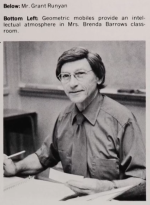It's kind of tricky to draw a line under what's patina vs plain old damage. I struggled with that a lot when I had vintage cars. I'm an originalist, so if a car has faded but original paint and worn but original seats, etc, I tend to favor leaving it alone. Partly because it's still the original thing, however faded, but also because the wear and tear tells the story of those who had it before me. Otherwise if it's been heavily changed over the years, I don't mind doing things to make it more usable. Depends on how much original is left. A side note about major restoration: the trouble with, say, a frame off restoration is you never quite get it 100% to drive or look like the original. You can't replicate factory processes in your garage. My friend who is in restoration went so far as to say unless you've rode in an untouched original vintage car, you've not rode in the 'real' thing.
Hobbyist computers are similar for me. Most of the time I don't know who the owner was, how many hands it passed through to get to me, so it's not such a big deal to take it apart and try to restore it. But for something like this Mark-8 or the TVT.. I have a name and even a face of someone who (as far as I can discern) passed long ago, and these are particularly special because he built them by hand. Everything I change I kind of erase him a little bit. I know it probably sounds weird - but I'm an historian more than tech buff. Grant can't tell the story of these machines, but they kind of can. The TVT I have no problem working on - the boards were all tossed inside the case and have bounced around.. no sense leaving them like that. The Mark-8 *has* been repaired at some point.. the last slot actually broke in half and I can see where someone (Grant?) glued it back together. But otherwise it's pretty much as he left it, I think.
Maybe I'm being a little more emotional than I should be, given my Dad's recent passing... just like the idea that something like these kind of gives a kind of life to its owner again - keeps their name alive.

